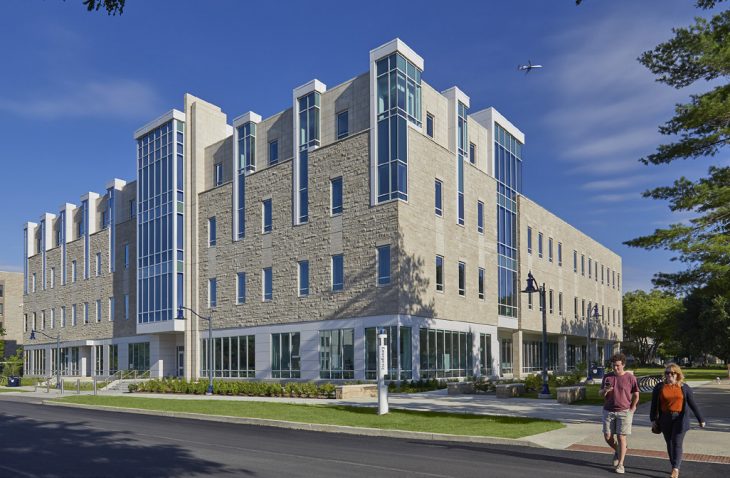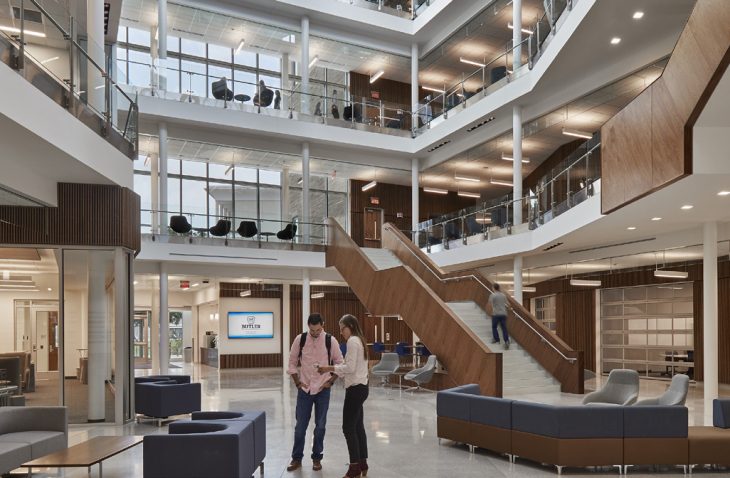New College of Business Building
IMEG provided mechanical, electrical, plumbing, and fire protection engineering design and services for the new Andre B. Lacy School of Business at Butler University. The new facility provides a centralized location for the fast-growing College of Business, which now has more than 1,000 students in classrooms spread across the campus.
The 103,000-sf building houses both flat-floor and tiered classrooms, breakout rooms, computer labs, faculty offices and support spaces, and the Butler Business Consulting Group office. A focus of the building is Active Learning, with classroom spaces designed to allow for collaboration and flexibility in teaching. A “speakeasy” innovation lodge, an MBA student lounge, outdoor classroom, and a roof garden terrace were also included in the design.
A four-story atrium with window monitors at the top provide natural light to almost every interior space in the building. This presented a design challenge with numerous code implications. To resolve the challenge engineers collaborated extensively with the architect and a code consultant to analyze different options. The safest and most cost-effective option was identified after discussions with the university and local fire department.
IMEG engineers also worked with the facilities department to develop a comprehensive list of standard equipment that included preferred manufacturers. The list was developed
to ensure the building would have the university’s preferred equipment and to avoid common maintenance problems experienced in the past.
Per the MEP designs, the facility uses the central campus chilled water supply, and 6,000 MBH high-efficiency condensing boilers were added. A 200 KW natural gas generator and 2,000 AMP electrical service were also included in the design.
In addition to the high-efficiency condensing boilers, the building’s sustainability features include 100-percent LED lighting, and demand control ventilation allowing users to adjust the building’s airflow. Low-flow plumbing fixtures, including dual flush water closets and pint flush urinals, were installed.
The design is predicted to perform 18 percent better than the ASHRAE 90.1-2007 baseline.









